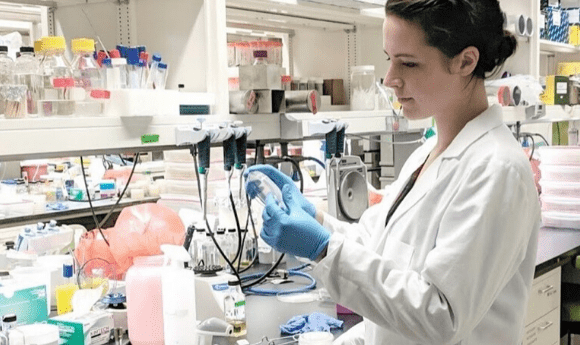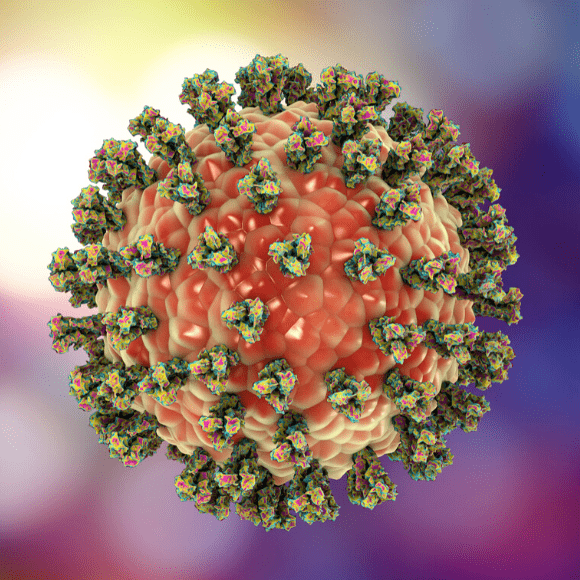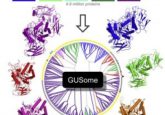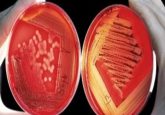Appreciating complexity in host-microbe interactions

We often consider host-microbe interactions as two partners each playing a role to maintain or destroy balance. But really, they are more like spider webs of interactions holding together hundreds – or even thousands – of different species. Can diving into the complexity of these relationships help us to understand the world, or do we just end up with more questions than answers?
Most people who have taken a course in microbiology are well-aware of Koch’s Postulates. Published by Robert Koch in 1890, these rules of rational and deliberate testing to find out which microbe causes a certain illness laid the framework for many of modern medicine’s principles and techniques. Pared down completely, the postulates require that a microbe should be found in a sick individual and should cause the disease when given to an otherwise healthy individual. Although some of Koch’s postulates have been amended (for instance, to account for asymptomatic carriers who carry the bacteria without showing signs of illness or viruses that can’t be grown without a host cell), the general idea permeates microbial studies: a disease is caused by one microbe.
We love stories of clear-cut explanations, when science can find one cause for one effect. But most stories aren’t quite so simple. While extremely useful, these “one microbe, one disease” parameters fail to encapsulate the complexity of how microbes interact with their host environment. As we’ve grown to understand over the past several decades, most environments that allow for the life of one microbe also allow for many microbes to live together. Rather than thinking in terms of healthy or harmful microbes, we have to consider how entire microbiota (microbe communities) can affect the health of their host. In terms of bacteria, not only do the microbes interact with their host, but they communicate with each other and affect their neighbors’ behaviors.
Of course, we still need to distill down our questions to create testable hypotheses. We can focus our questions while leaving our field for possibilities wide open. By asking “what is causing this disease?” rather than limiting ourselves to one microbe at a time, we can begin to understand and control how entire microbial ecosystems might be affecting human health and interests. I’ve highlighted three examples of how examining host-microbe interactions through the lens of complex microbial communities actually gives us more tools to find our answers.
Gingivitis
Whether you call them cavities, caries, or just tooth decay, nobody wants to have to visit a dentist because of tiny holes in our teeth or swollen gums. Usually attributed to eating too much sugar or drinking carbonated beverages, gingivitis is actually caused by species like Porphyromonas gingivalis leaving a slimy film called dental plaque. Great, that’s pretty simple. So, let’s make sure to get all of these bacteria off our teeth. With this understanding, targeting removal of P. gingivalis specifically seems like the best option to avoid gingivitis (other than removing all of one’s teeth).
But what if I told you that these bacteria didn’t stick to the teeth? Or, rather, they didn’t directly stick to the teeth. What if I told you that Porphyromonas gingivalis attach to other bacteria like Fusobacterium species, who in turn attach to species of Streptococcus and Actinomyces that are directly attached to the dentin (surface of the tooth). While this sequential association in the presence of hundreds of bacterial species is fascinating in itself, it also begs the question of whether our treatments could include assessment of the entire oral microbiome. With multiple steps and conditions for growth, we now have multiple targets for reducing cavities. Maybe we could limit the number of the Fusobacterium that attach to the Actinomyces; maybe we could find out why and how these species interact and change those dynamics; maybe we could find details about why some people deal with more tooth and gum disease than others even when they have the same habits.
 The Microsetta Initiative in the time of COVID-19
The Microsetta Initiative in the time of COVID-19
Daniel McDonald and Jack Gilbert discuss the Microsetta Initiative and how it evolved to help in the fight against SARS-CoV-2.
C. diff infections
In the case of Clostridium difficile colitis (I implore you to not search for this on Google Images, as many a lunchtime seminar was ruined for me by others’ presentations), the disease is directly caused by a bacterium called C. difficile; however, many people carry C. difficile without any symptoms. Interestingly, it’s the absence of other members in the gut microbiome that allows C. difficile to take over and ravage its host’s lower intestinal tract. Usually prompted by the administration of antibiotics, the normal microbiota of the intestine is wiped out – but, thanks to its uniquely hardy spore coat, C. difficile survives and proliferates.
Again, the presence of other microbes controls the behaviors of the pathogenic microbe. As such, scientists can look to understand why this happens and how to prevent the complete dysbiosis (breakdown of the normal balance of microbial species) rather than focusing solely on eradicating a notoriously tenacious pathogen. For instance, transferring the stool of a healthy individual to the intestines of someone suffering from chronic C. difficile infections (called fecal microbiota transplants, or FMT) can restore balance to the gut and effectively cure the disease when other treatments have already failed. While we don’t really understand how the native microbiome controls C. difficile growth or which individual bacteria might be important, the discovery that FMT can treat C. diff infections opens new opportunities for us to refine our tools and save lives.
Plant growth-promoting bacteria
Let’s switch to an instance of using microbes for the benefit of a host; bacteria helping plants grow. A plant growth-promoting bacteria (PGPB) is defined as any bacterial species that has been found to increase the host plant’s survival or growth under a certain circumstance, including during drought, or infection, or just general life as a plant. Similar to how eating yogurt containing live bacterial cultures can help a person prevent gastrointestinal irritation and improve their digestion, the presence of certain bacteria helps the plant to pull nutrients from the soil and protect themselves against another microbial invasion.
While some PGPB interactions are robust enough to be obvious under varying conditions, such as with Rhizobia and soybeans, many others are situation-dependent. For instance, my thesis work focused on understanding the interaction of plants with Bacillus subtilis, a very common soil bacteria that clearly improves plant growth under different laboratory conditions but fails to consistently produce equivalent effects in commercial fields.
While we could turn towards using chemicals or genetic manipulation to increase the effects of B. subtilis in fields, we can also appreciate the possible roles of neighboring microbes. The presence of certain bacteria will cause B. subtilis to grow and form structures that are especially resilient to stress and known to induce some crucial effects on plant immune systems. As such, it might be possible to identify “helper” bacteria to change the behaviors of Bacillus species so that their effects are great, more consistent, and ultimately more valuable for use in agricultural settings.
When considering host-microbe interactions, it may be simpler to think in terms of linear relationships wherein two partners each play a role to maintain or destroy balance. But really, it’s more like a spider web of interactions holding together hundreds – or even thousands – of different species. Opening our minds to the idea, although intimidating, that we can’t always distill down to two organisms allows us to better see and interpret the biological phenomena controlling our existence. This complexity is frustrating to decipher, as the interactions between the microbes and the host also rely on the interactions amongst the microbes. Having more players means more questions to ask but also more targets to study. There is no one-to-one relationship, and this isn’t a bad thing.
 Susanna L Harris, PhD recently finished her degree in Microbiology and Immunology at UNC of Chapel Hill. She hosts and presents public events about mental health, academic support and science communication. Learn more at her website or by following @SusannaLHarris on social media.
Susanna L Harris, PhD recently finished her degree in Microbiology and Immunology at UNC of Chapel Hill. She hosts and presents public events about mental health, academic support and science communication. Learn more at her website or by following @SusannaLHarris on social media.





